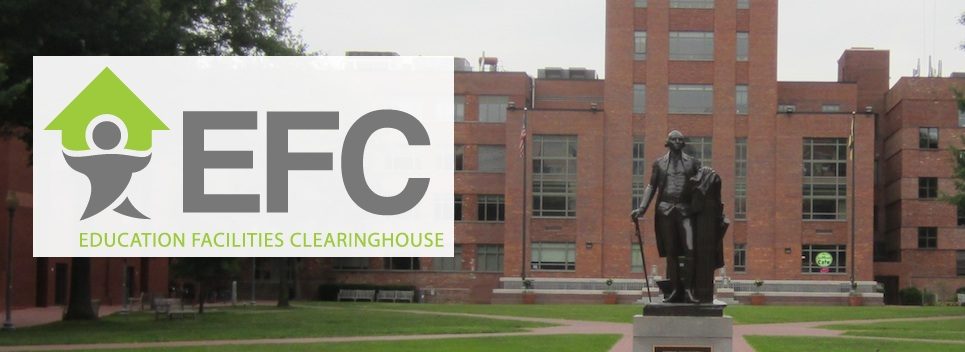By Dr. Linda Lemasters, June 30, 2014.
There is never a week that passes that I don’t see beautiful, well built, and inviting schools. Some are simply pictures; some are along the roads I travel. At the same time, there is rarely a week that I don’t see, read about, drive by schools that are less than inviting and are unappealing. It is always said that it does not matter where children learn: in a one-room schoolhouse, out of doors, rooms with peeling paint, or places that are not clean and have musty smells. Sometimes I believe this is a “cop out.” The person making those comments not only has not realized the importance of the places where children learn; but also never has visited any of the devastating facilities.
My first thoughts always turn to where the unattended buildings are located. Is this the place the mayor’s children go to school? Do children in the gated communities . . . in beautifully developed suburbs feed into these schools? The geographic area is more likely to be rural, inner city, or on the other side of the railroad tracks. The bigger question, however, is there a difference in student achievement in the very different school settings?
When discussing educational reform, we rarely have such conversations without the phrase “achievement gap” being mentioned. Over all we have not succeeded as a society in eradicating the gap and along the way, have failed taxpayers and students. Since 2002, tax-payers have funded $4.4 billion in federal support of state developed achievement testing for grades three through eighth (Levine & Levine, 2013). Further, the Brookings Institute estimates states have funded $1.7 billion annually on achievement testing (Chingos, 2012). Taxpayers, also, fund approximately $129.6 million a year on NAEP for the Nation’s Report Card as a means to crosscheck state achievement testing. In return for funding, taxpayers have gotten little in return (Levine & Levine, 2013). For example, the recent November 7, 2013 NAEP Report, considered the “gold standard” in test score reporting, once again demonstrated there is a “lack of progress closing the racial and ethnic disparities in the test results” (NAEP, 2013; Ravitch, 2010, p. 2). Since the last testing cycle of NAEP in 2011, eighth grade math scores have risen one point and reading has risen eight points (NAEP, 2013). For black eighth graders math scores did not change significantly, while Hispanic scores rose two points. In reading, black scores rose two points, while Hispanic scores rose three points.
According to Kober (2001), there are no simplistic explanations for the differences in racial and ethnic performances, and there is inadequate information on factors that may affect the gap. To some the roots of the gap are beyond the reach of educators and reside in economic and social challenges that minority students face (Evans, 2005). To others education is a simple production function input output relationship, yet the goal of universal outcome criteria treats the symptom not the problem (Smillov, 2013). Improving reading and math test scores only treats “meager symptoms of a very complex problem” in a limited way and requires a holistic approach (Francis, 2013).
With the complicated issues surrounding the achievement gap, what are some facts that we do know? While the research findings are mixed, Bowers and Urick (2011) said,
. . . if we take the mediated effects approach, it may be that actual facility quality, be it structural or maintenance, directly effects educator’s perceptions of their facilities that then influences the overall academic and motivational climate of the school, which then influences student achievement up or down. (p. 1)
So the next time you hear the term “achievement gap,” ask yourself where do these children go to school. Is their school in an environment that appears safe, warm, and inviting? Is it clean inside with air conditioning and proper furniture, free from respiratory hazards, and capable of supporting effective technology? While the gap is complicated, perhaps systemic in nature, and cannot be fixed easily, we have the capacity and ability to improve the places where students learn and teachers teach. Thus, the mission of the Education Facilities Clearinghouse: Improving the places where children learn.
This is our first Bricks and Mortar Blog. We invite you to comment and watch for the next column. We also will invite guests to join us; be sure to check in to see who they are. The EFC (efc-staging.edstudies.net) invites you to join us on Facebook, Twitter, and LinkedIn.
References:
Bowers, A. J., & Urick, A. (2011) Does High School Facility Quality Affect Student Achievement? A 2-Level Hierarchical Lin-ear Model. Journal of Education Finance, 37(1), 72-94.http://muse.jhu.edu/journals/journal_of_education_finance/v037/37.1.bowers.html
Chingos, M. (2012). Strength in numbers state spending on K-12 assessment systems Brown Center on education policy as Brookings (pp. 1-41). Brookings Institute: Brookings Institute.
Evans, R. (2005). Reframing the achievement gap. Phi Delta Kappan, 86, 582-589.
France, J. (2013). Low test scores are the symptom, not the disease. Retrieved fromhttp://nepc.colorado.edu/blog/low-test-scores-are-symptom-not-%E2%80%9C-disease%E2%80%9D
Kober, N. (2001). It takes more than testing closing the achievement gap (pp. 1-47). Washington, DC: Center on Education Policy.
Levine, M., & Levin, A. (2013). Education reform movement has been a costly failure, The Buffalo News.
NAEP (2013). The Nation's Report Card. 2013 Math and Reading. Washington, DC: National Center for Educational Statistics.
Ravitch, D. (2010). The death and life of the great American school system how testing and choice are undermining education. New York, NY: Perseus.
Smillov, M. (2013). Common Core: Reinforcing failure. American Thinker. Retrieved fromhttp://www.americanthinker.com/2013/08/common_core_reinforcing_failure.html
Linda Lemasters, Director, Education Facilities Clearinghouse (Liz Johnson, GWU EdD student contributed to the research)
Linda is an associate professor in the Graduate School of Education and Human Development of The George Washington University, where she directs the educational administration and policy studies program, teaches graduate level coursework, advises students, and directs student research. Her areas of expertise and research include educational planning, facilities management, and women CEOs. She actively conducts research concerning the effects of the facility on the student and teacher, publishes within her field, and has written or edited numerous books including School Maintenance & Renovation: Administrator Policies, Practices, and Economics and book chapters including a recent chapter, Places Where Children Play, to be published July, 2014 in Marketing the Green School: Form, Function, and the Future.









 Earthman, G. (2013). Dr. Earthman wrote about the catastrophes that can occur at any place and for any reason. Within the past years an extraordinarily high number of catastrophic events have happened to public schools. From a high number of tornados to excessive flooding and unseasonable weather, the country has experienced a considerable number of very difficult environmental disasters that have adversely affected schools. These are never pleasant occurrences and it is the duty of education officials to ameliorate the subsequent devastation. Such was the case in a school system in Virginia where the roof of the gymnasium collapsed during a snowstorm in the middle of the school year. At the beginning of the spring semester, the high school students were without a place to continue their schooling. The planning efforts of the school authorities were strained for several reasons. Questions regarding the continued use of the high school building for the remainder of the year and where to put the student body for the rest of the year if the building was unusable were of utmost concern. The concerns and maneuvering of the various players in this drama are discussed in this article. In spite of the fact that this was a catastrophe to the various groups within and outside the school system, plans were made and executed so that all students were housed for the semester. The planning activities for the following year are set forth as well as the manner in which the school division staff conducted the effort and interacted with the community and governing body. The lessons that can be learned from the planning effort of this school staff are carefully analyzed and discussed.
Earthman, G. (2013). Dr. Earthman wrote about the catastrophes that can occur at any place and for any reason. Within the past years an extraordinarily high number of catastrophic events have happened to public schools. From a high number of tornados to excessive flooding and unseasonable weather, the country has experienced a considerable number of very difficult environmental disasters that have adversely affected schools. These are never pleasant occurrences and it is the duty of education officials to ameliorate the subsequent devastation. Such was the case in a school system in Virginia where the roof of the gymnasium collapsed during a snowstorm in the middle of the school year. At the beginning of the spring semester, the high school students were without a place to continue their schooling. The planning efforts of the school authorities were strained for several reasons. Questions regarding the continued use of the high school building for the remainder of the year and where to put the student body for the rest of the year if the building was unusable were of utmost concern. The concerns and maneuvering of the various players in this drama are discussed in this article. In spite of the fact that this was a catastrophe to the various groups within and outside the school system, plans were made and executed so that all students were housed for the semester. The planning activities for the following year are set forth as well as the manner in which the school division staff conducted the effort and interacted with the community and governing body. The lessons that can be learned from the planning effort of this school staff are carefully analyzed and discussed.